Gateway Arch National Park
In the last post from our November 2024 trip to Arizona Alison and I visited the frontier towns of Tombstone and Bisbee. It was our last day in the Grand Canyon State and it had indeed been a grand visit, but alas it was now time to head back to Canada. We started out the next morning from Tucson with several planned stops along the way, the first of which was to visit Gateway Arch National Park on the banks of the Mississippi River in St. Louis, Missouri. We had passed by it on the way down with Alison taking this photo from the SUV, but I wanted to get a closer look so we got a hotel room in the city and headed for it on a late Sunday afternoon. Here’s why I think it’s worth seeing close up.
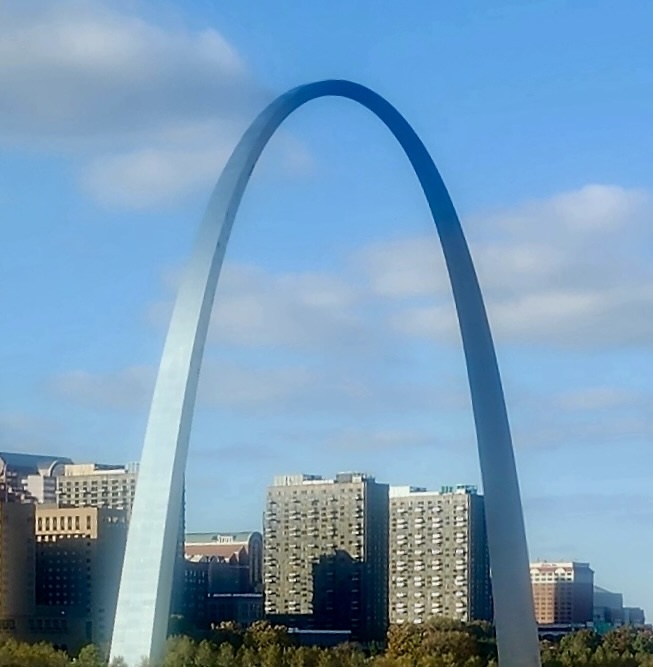
History of Gateway Arch National Park
I had no idea that Gateway Arch National Park is actually much older than the arch, which sounds like a contradiction of terms, but isn’t. In 1935 the area that now encompasses what became a national park only in 2018, was designated a National Memorial. Unlike National Monuments which can be designated by Presidential decree and do not require Congressional approval, National Memorials do require an act of congress. The Historic Sites Act passed in August 1935 gave the National Park Service broad powers to designate National Memorials and other means of preserving the nation’s history. Mount Rushmore is perhaps the most famous National Memorial in the United States. The designation of Jefferson National Expansion Memorial, which was the original name of what would become Gateway Arch NP, was meant to commemorate the Louisiana Purchase which made St. Louis the first American city west of the Mississippi. I also had no idea that the idea of creating an actual gateway arch was first floated in the 1930’s and from day one meant to be a part of the memorial.
What today is a broad expanse of grass, gardens and unobstructed riverfront was in the 1930’s and right up until the 1950’s, the site of dilapidated warehouses, rail yards and dockyards from the heyday of St. Louis as the major midwest river port that made it ‘The Gateway to the West’. These were all to be expropriated and razed which made for a lot of litigation from the companies that owned the properties and this delayed getting anything accomplished for years. Once these claims finally got settled WWII came along and everything was put on hold again. However, after the war ended the project received a great boost from President Truman who was a native Missourian and a great proponent of building a monument that would reflect the role St. Louis had played in the American tableau.
In 1947 a nationwide contest was held to select the design for the monument with over 170 proposals received. In 1948 Finnish born architect Eero Saarinen, the leader of a team of five, were declared the winners. The team included his wife Lily who was a sculptress as well as a second architect, a landscape architect and an interior designer. However, it still took another fifteen years for construction to begin, by which time Saarinen had died. However, his blueprints were followed and the world’s tallest arch was completed in 1965. It included a unique interior tram system designed by Dick Bowser whose expertise was in building parking garage elevators of all things. This would take visitors to the top where they could look out over the city from one side and the Mississippi River and Illinois on the other side. Once again I learned something new – I was not aware that you could go to the top and thought the Gateway Arch was something you just stared at.
While there was a small museum on the grounds that opened in 1977, it was completely rebuilt and greatly enlarged in 2018 and now The Museum at Gateway Arch occupies the area directly below the arch. It is free and you pass through it to get to the trams. It tells the story of the Louisiana Purchase and the city of St. Louis in a modern context that doesn’t gloss over the consequences of the doctrine of ‘Manifest Destiny’ to the Indigenous people west of the Mississippi. The reality is you will probably spend more time in the museum than inside the arch proper.
Also in 2018, at the insistence of the two Missouri senators and with the approval of President Trump, Jefferson Expansion National Memorial was redesignated as Gateway Arch National Park, a move that was resisted by the National Park Service without success. It is by far the smallest national park in the country and shares nothing in common with any of the others. As a Canadian, it makes no difference what it is called; the fact is that is something that is truly unique and actually quite breathtaking, both from afar and up close, so let’s go have a look.
We parked in a lot owned by the Cathedral Basilica of St. Louis which adjoins Gateway Arch National Park and is only a short walk from the entrance to the park.
It was a very pleasant Sunday afternoon with a lot of families enjoying the grounds and the riverfront, but it was still possible to get an unobstructed photo of the Gateway Arch. It’s pretty damn impressive. Look closely and you can see the tiny windows at the very top.
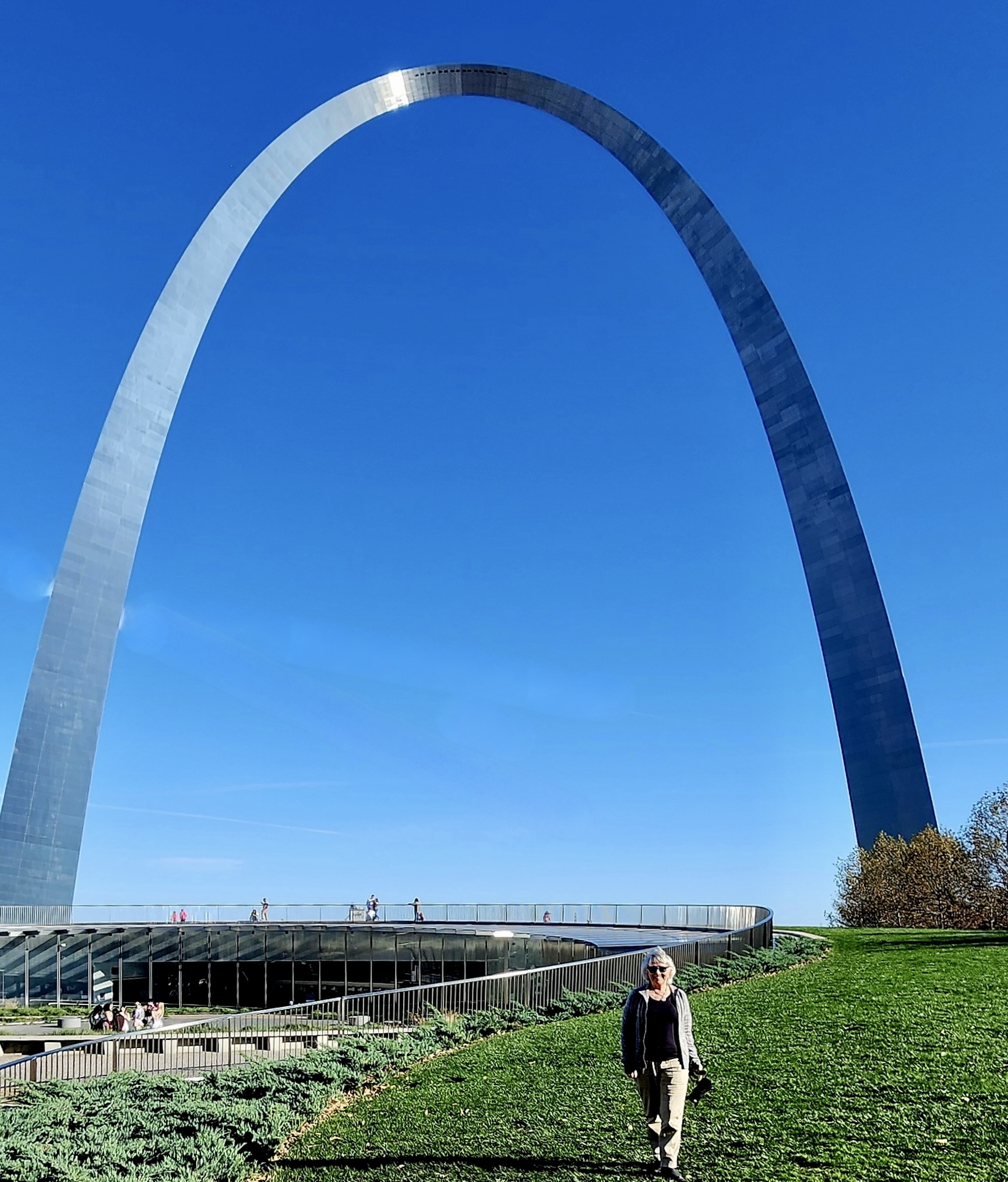
To go inside you go down a ramp to the left of where Alison is standing and into the museum. This photo gives a better idea of the relationship between the museum, the arch and the river.
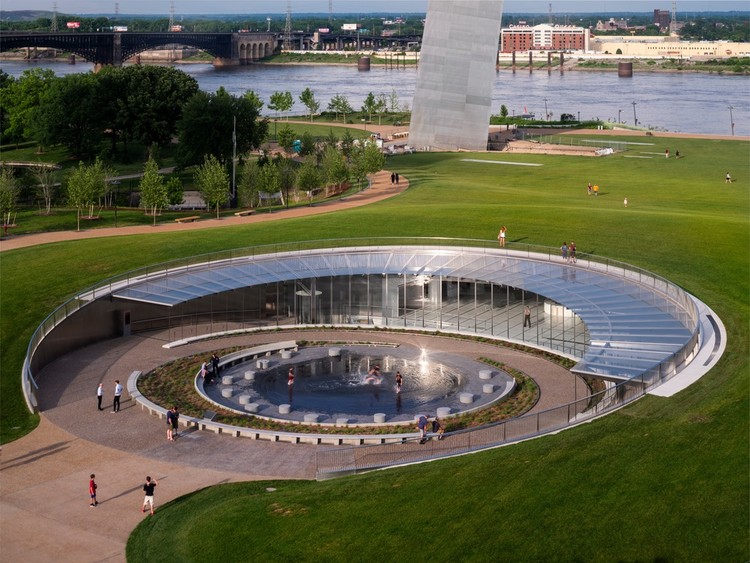
As noted, you need to pass through the museum to get to the tram. Being here in November there was no problem buying tickets on the spot, but during the tourist season advance purchase is almost certainly a necessity which you can do here.
Trams go up both sides of the arch and in teams of about twenty. However, unlike any tram you’ve ever been on, this one separates groups of four that go into tiny pods. I’m not that tall, but you can see how cramped these spaces are. Luckily we were at the end of the line and there were only the two of us. This is definitely not a ride for the claustrophobic.
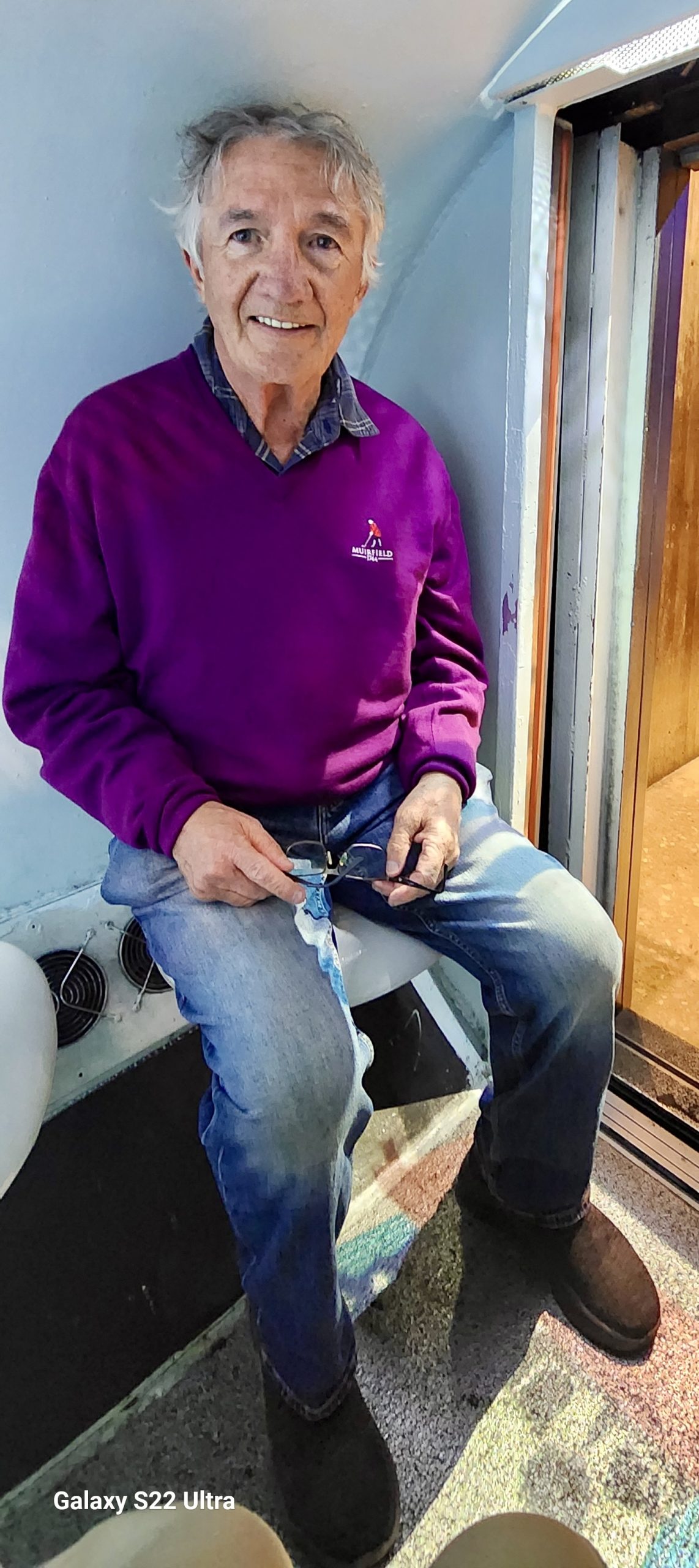
The ride to the top takes about four minutes and you are only allowed ten minutes at the top before the group is ushered back to the descending tram. However, that was plenty of time.
The most notable sight from the top is the Old St. Louis Courthouse which is actually part of Gateway Arch National Park.
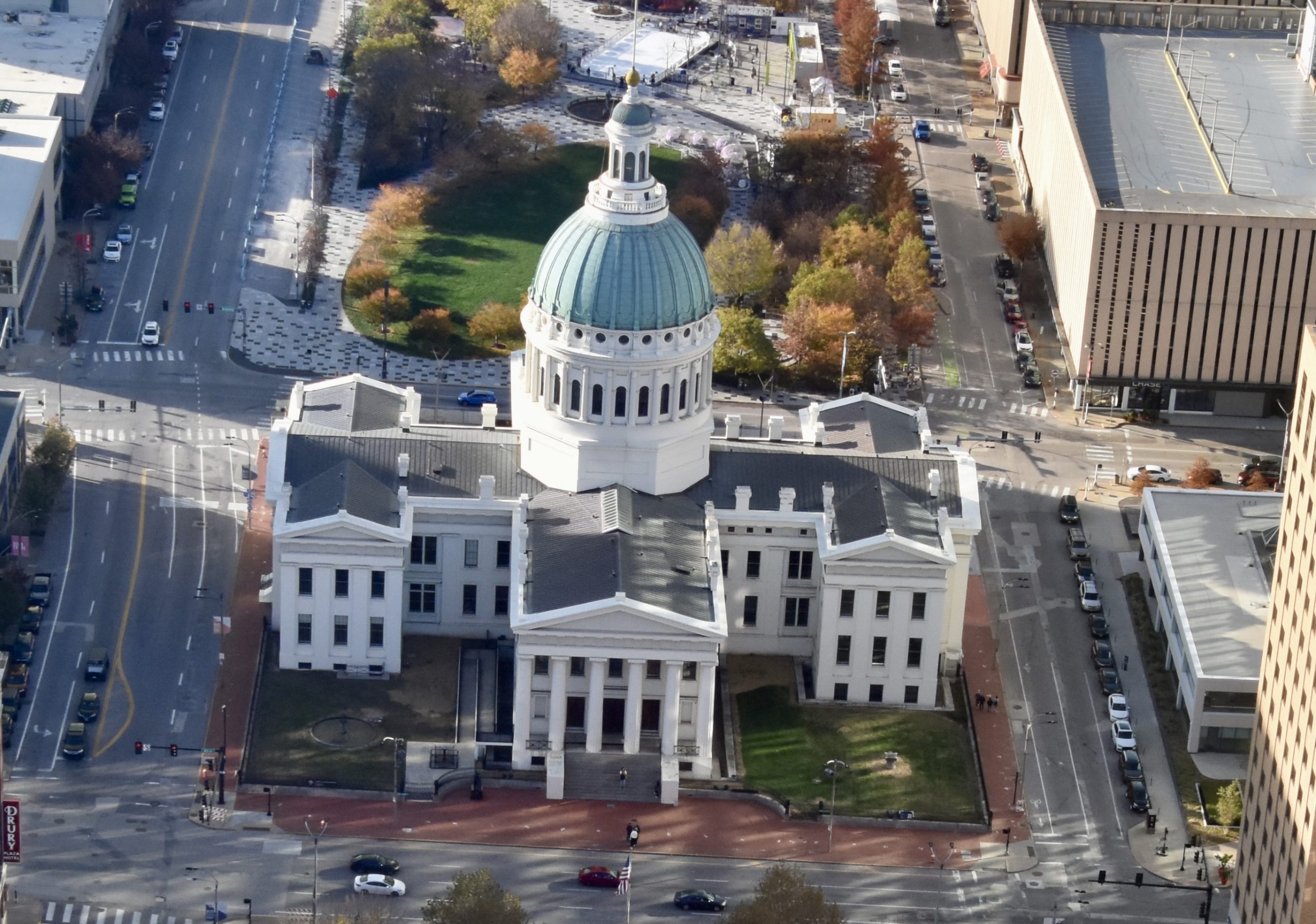
It’s an impressive Greek Revival structure with a Renaissance dome and an infamous past. It was here in 1857 that the Dred Scott vs. Sandford case was first determined. Dred Scott was a black slave in Missouri whose owners had taken him across the river to Illinois where slavery was illegal and thus while in that territory he was legally a free man. The owners then took him back to Missouri which was a slave state. Scott managed to secure legal representation and brought a suit claiming that as he was a free man in Illinois he was no longer a slave. In one of the most despicable legal decisions in United States history the court found against Scott and held that slaves were not entitled to American citizenship. That decision was upheld by the United States Supreme Court. If that wasn’t bad enough, slaves were still being sold in this building right up until the outbreak of the Civil War in 1961.
In 1872 one Virginia Minor attempted to vote in a local election and was arrested. In Minor v. Happersett the court here ruled that the United States Constitution did not confer the right to vote for women and once again the Supreme Court brought itself into disrepute by upholding that ruling. So, in toto, the rights of about 60% of all Americans were screwed by decisions made in this building. That’s about the same percentage that have been screwed by rulings of the present Supreme Court – plus ça change, plus c’est la même chose.
The Old Courthouse is currently closed to the public and is undergoing a major renovation. It is scheduled to reopen some time in 2025.
You can also see a newer building with a much more illustrious history from top of the Gateway Arch. This is the third Busch Stadium to exist on this site. It opened in 2006 and the St. Louis Cardinals defeated the Detroit Tigers here for the World Series in that same year.
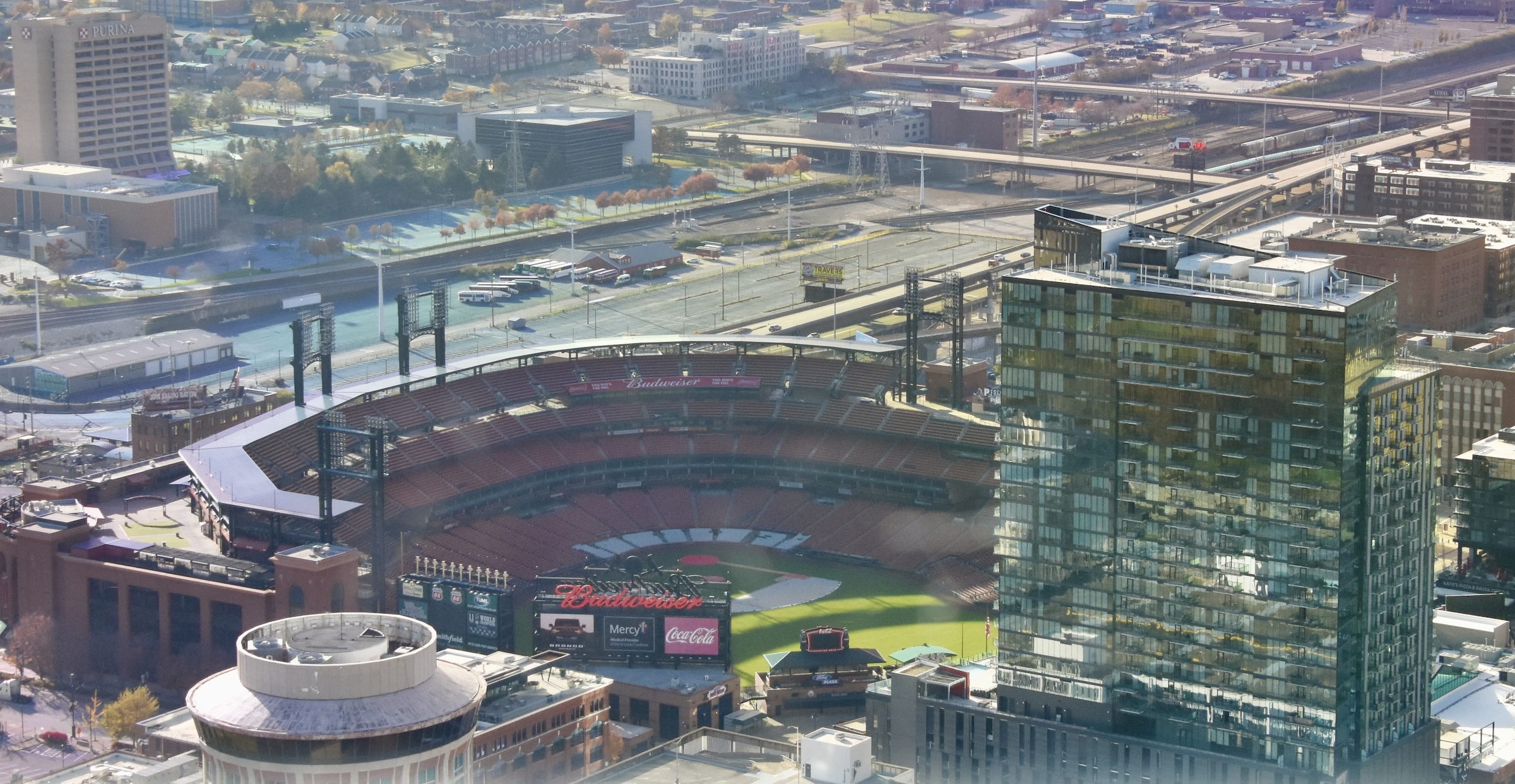
From St. Louis we will move on to Illinois’ capital city Springfield where we’ll visit the home and grave of the man who freed Dred Scott, Abraham Lincoln. Hope you’ll join us there.

